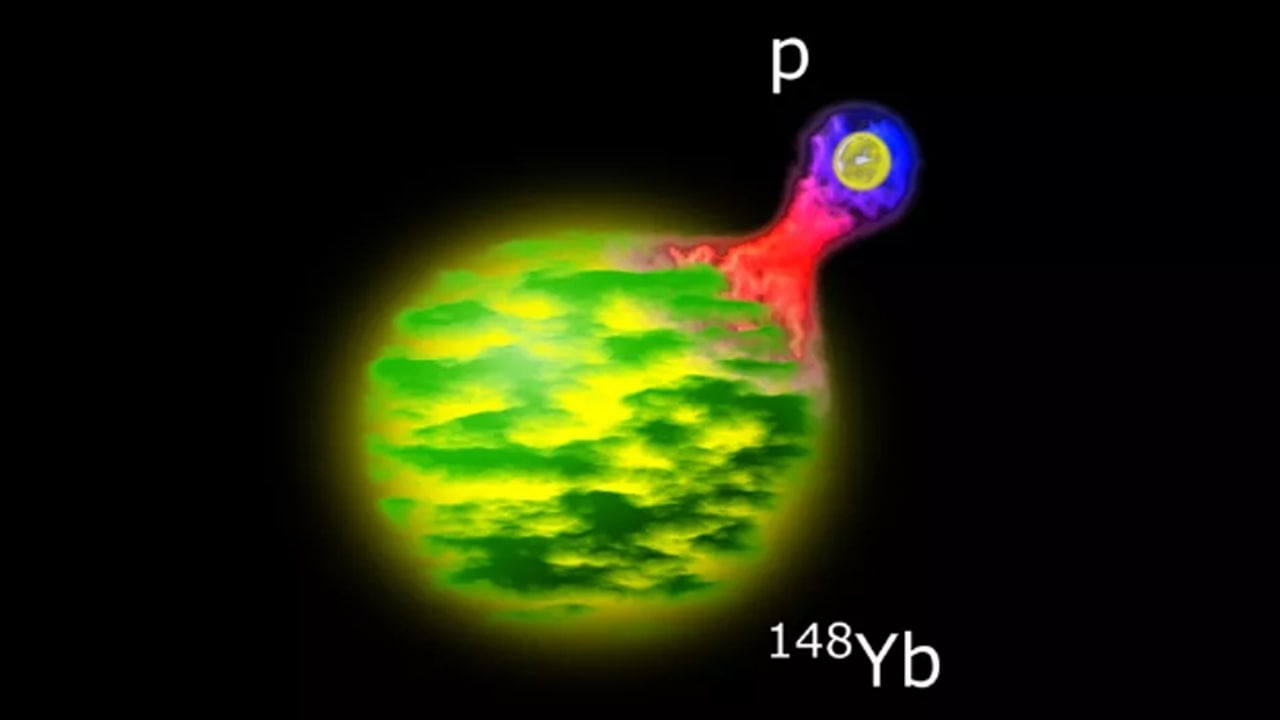According to the latest report, recently, Finnish physicists have created a pumpkin-shaped nucleus that can release protons in a rare radioactive decay. Among the radioactive elements emitted by protons, the nucleus of lutetium-149 has the shortest half-life. Writing in the March 16 issue of Physical Review Letters, the researchers report that the nucleus can lose half of its radioactivity (decay into other elements) in just 450 nanoseconds.
Join tip3x on Telegram
Moreover, Lutetium (Lu) is a rare earth element, a silvery metal in its natural form, with atomic number 71. Among rare earth elements, lutetium is only more abundant than thulium and the radioactive promethium but is still much more common than silver.
Typically, lutetium occurs in the Earth’s crust along with the metallic element ytterbium (Yb). Lutetium-176 is a relatively common radioisotope (2.5% of all lutetium isotopes) with a half-life of about 38 billion years and can be used to measure the age of meteorites. Lutetium on Earth consists of two isotopes, lutetium-175 and lutetium-176, of which only lutetium-175 is stable.
 In the 1980s, scientists observed the decay of lutetium’s isotope, lutetium-151, and found that it releases a proton from the nucleus in its ground state. The ground state is the state in which an atom is at its lowest energy level when electrons are moving in orbits closest to the nucleus, which is also the most stable configuration of an atom. Proton emission is rare, and lutetium-151 was the first isotope to be observed to emit protons in stable ground state decay.
In the 1980s, scientists observed the decay of lutetium’s isotope, lutetium-151, and found that it releases a proton from the nucleus in its ground state. The ground state is the state in which an atom is at its lowest energy level when electrons are moving in orbits closest to the nucleus, which is also the most stable configuration of an atom. Proton emission is rare, and lutetium-151 was the first isotope to be observed to emit protons in stable ground state decay.
Studying proton decay allows researchers to peer inside atomic nuclei to understand how protons and neutrons bind together. As part of this study, Kale Olanin, a postdoctoral researcher in physics at the University of Jyväskylä, and his colleagues created a new isotope of lutetium, lutetium-149, which has 71 protons and 78 neutrons.
They found that lutetium-149 was more exotic than lutetium-151. First, the nucleus of lutetium-149 is not a neat sphere, but a squashed ellipsoid that looks a bit like a pumpkin. This phenomenon is called “oblate distortion,” and lutetium-149 is the most distorted nucleus ever measured.
The half-life of lutetium-149 is also significantly shorter than that of lutetium-151 at 80.6 milliseconds. The researchers reportedly created the new lutetium isotope by burning nickel-58, an isotope of nickel, and ruthenium-96, an isotope of ruthenium.
In the study, lutetium-149 decayed into ytterbium-148, which itself does not exist for long, with a half-life of 250 milliseconds. The researchers say it is possible in the future to create lutetium-148, which may have a longer lifespan than lutetium-149.
